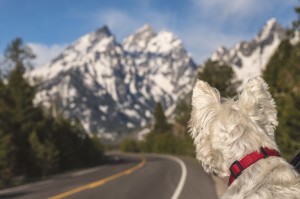 Summer road trips and family vacations bring to mind nostalgia and opportunities for making new memories. Not surprisingly, many pet owners choose to include our family pets, especially our canines, on these memory-making road trips to beautiful destinations. If you are planning on traveling with pets this summer, you’re probably wondering how to prepare for the long trip with your pet.
Summer road trips and family vacations bring to mind nostalgia and opportunities for making new memories. Not surprisingly, many pet owners choose to include our family pets, especially our canines, on these memory-making road trips to beautiful destinations. If you are planning on traveling with pets this summer, you’re probably wondering how to prepare for the long trip with your pet.
Here are some considerations and tips to ensure a fun, harmonious, and pet-safe adventure.
Before the Journey: Pet-Safe Travel Preparation
If you haven’t taken your pet on a long trip before, spend some time acclimating him or her to traveling by going on short, local drives.
You buckle-up for safety, and so should your pet. Use a sturdy, ventilated carrier buckled into the back seat for cats and small mammals, or, for larger dogs, a crate that has been secured with a belt, netting, or straps. Some dogs prefer to sit on the car seat and are comfortable using a special seat belt attachable harness. Do your homework on pet restraint systems before you buy, and call us with questions.
If you are traveling to a new environment, consider the possible pests, parasites, or wildlife you might encounter. Discuss additional vaccinations and preventatives (such as those for mosquitoes, ticks, and fleas) your pet may require with your veterinarian.
Not all lodging or campground facilities are pet-friendly. Do your homework in advance by contacting the facility or hotel and inquiring about their pet policies specific to the breed, size, and temperament of your pet. Websites like DogFriendly.com are great resources in your search for lodging.
Microchip your pet and ensure his or her identification tags are current. Include a cell phone number and email on your pet’s ID tags, too.
Packing for Your Pet’s Journey
In addition to your pet’s camera and travel journal (wink), you will want to consider packing the following for your pet:
Along with a crate or carrier, your pet will enjoy some soothing, familiar items, such as a favorite blanket or bed and toys to keep him or her busy.
Medications and topical or oral preventatives will need to be safely packed (and some will need to be kept cool), and you should have a copy of your pet’s prescription with you too, especially for controlled substances.
Avoid stomach upset and dehydration by bringing enough of his or her regular food and treats, and a spill proof, durable water bowl.
Some pets will require an exercise kennel or pen, while others will need a leash and collar for walks.
If you are crossing into Canada, you will need to bring a certificate of health, signed and dated by a veterinarian no less than 10 days before your departure date. It’s generally good practice to bring copies of your pet’s vaccination and health records while traveling, in case they are needed for reference. Certain species, such as those considered exotic or wild, will require additional clearance and permits. For more information, refer to the USDA website.
While on the Road
For those pets that would rather be on the couch than on the road, consider soothing them through the use of a Kong toy filled with an appropriate treat, or a cover for your cat’s carrier. Several hours of yowling doesn’t make for a pleasant journey for anyone, so try and get a sense of what soothes your pet well in advance of the trip. Felines will often calm down when their carrier is covered with a blanket or towel, for example, and some kitties benefit from products like Feliway.
If your pet is prone to car sickness, avoid accidents and discomfort by limiting food intake the morning of the trip. However, make sure he or she has plenty of water at all times. And, plan for more frequent stops, so your friend can get out, stretch, and take bathroom breaks as needed.
Maintain your pet’s health and safety by avoiding potentially dangerous and unfortunately common mistakes:
Be sure your car is temperature appropriate for your pet by using air conditioning and/or air circulation
Don’t let your pet stick his or her head out of a window
Never allow your pet to ride in the back of a truck, even in a crate or carrier
Be certain to stay with your pet at rest stops and gas stations, never leaving your pet for any length of time in a parked car.
If your pet is a less-than-happy traveler, please call us and we will do our best to recommend possible medications or treatments to assist your pet with the upcoming trip.
Safe travels!
 Summer road trips and family vacations bring to mind nostalgia and opportunities for making new memories. Not surprisingly, many pet owners choose to include our family pets, especially our canines, on these memory-making road trips to beautiful destinations. If you are planning on traveling with pets this summer, you’re probably wondering how to prepare for the long trip with your pet.
Summer road trips and family vacations bring to mind nostalgia and opportunities for making new memories. Not surprisingly, many pet owners choose to include our family pets, especially our canines, on these memory-making road trips to beautiful destinations. If you are planning on traveling with pets this summer, you’re probably wondering how to prepare for the long trip with your pet.





